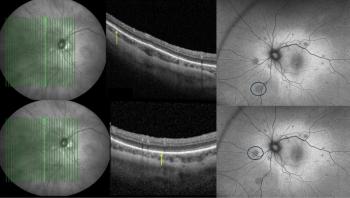
Retinal changes: a mortality risk in non-diabetics
A study published in the September issue of the American Journal of Epidemiology, suggests that retinal changes have possible prognostic implications regarding the survival of persons with diabetes.
A study published in the September issue of the American Journal of Epidemiology, suggests that retinal changes have possible prognostic implications regarding the survival of persons with diabetes.
Despite retinopathy being fairly common among non-diabetics, its prognostic implications are not fully understood. Ronald Klein and colleagues from the University of Wisconsin, USA and the Federal University of Sao Paulo, Brazil hypothesized that retinal alterations are associated with increased mortality. In order to investigate this, they evaluated survival rates among 4,292 non-diabetic participants (age range, 43-84 years) of the Beaver Dam Eye Study.
Retinal photographs were used to classify retinopathy into four groups: no retinopathy, retinal haemorrhage only, retinal micro-aneurysm or moderate or worse retinopathy. Survival was analyzed over a 14-year follow-up period in five-year intervals.
The baseline prevalence of retinopathy was 7.6%. After the 14-year follow-up period it was discovered that moderate retinopathy, at baseline, increased the risk of all-cause mortality by 24% and ischaemic heart disease by more than three-fold.
Based on these results, the researchers believe that retinal changes do have possible prognostic implications regarding the survival of persons without diabetes.
Newsletter
Get the essential updates shaping the future of pharma manufacturing and compliance—subscribe today to Pharmaceutical Technology and never miss a breakthrough.













































